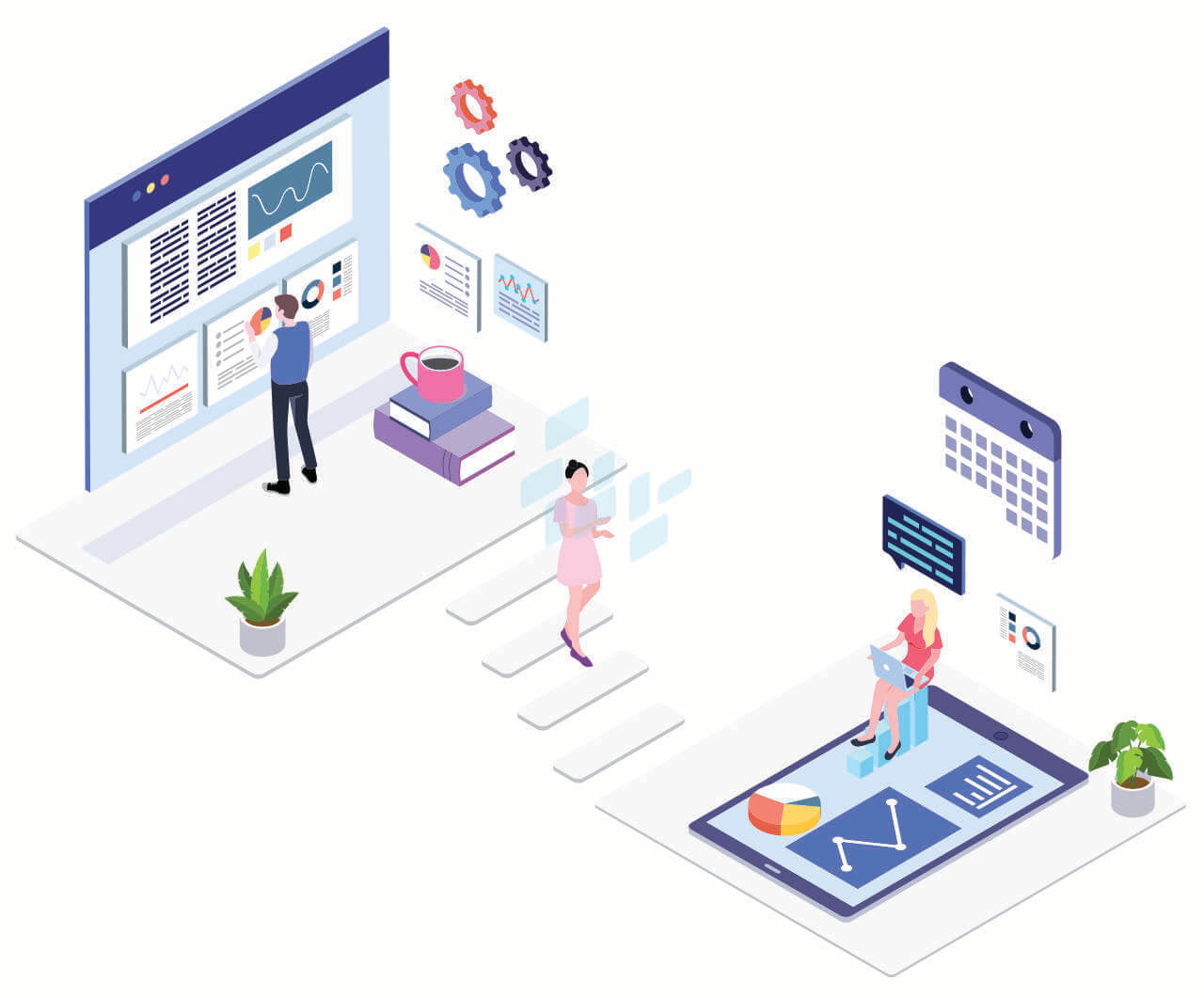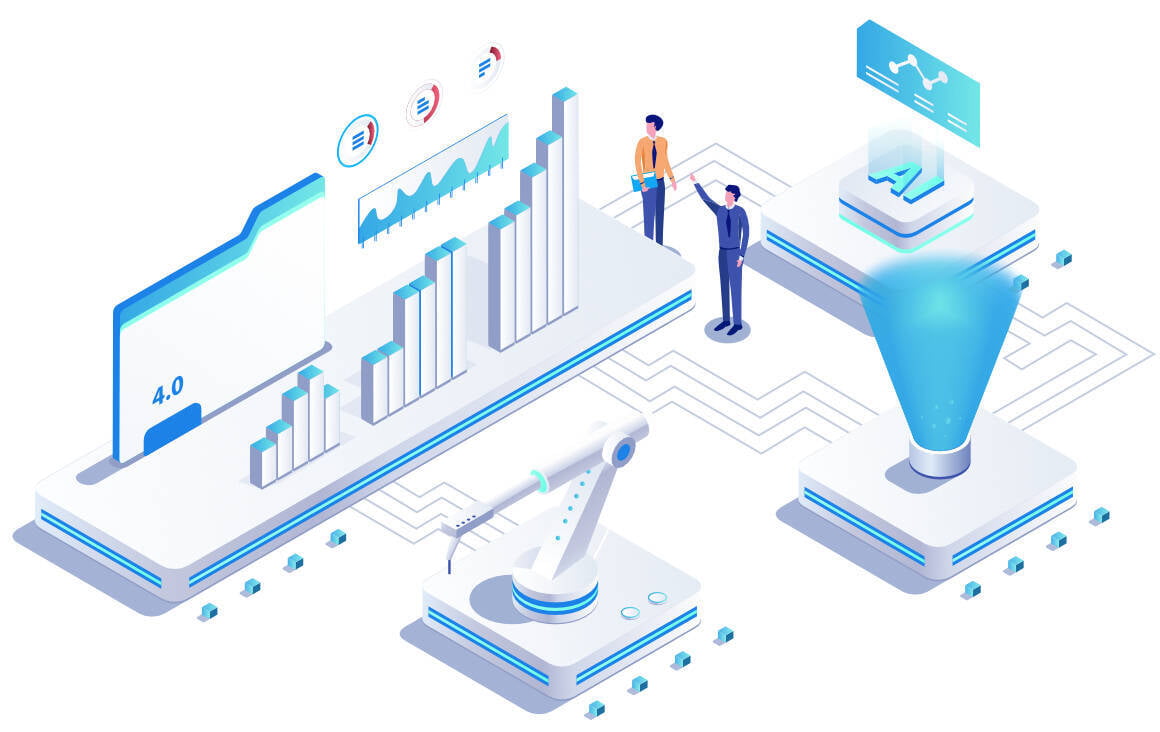
The process of change around digital adoption goes far beyond the simple implementation of new technology. To achieve a true digital rollout, people need to understand the strategies involved, the reasons for digital transformation and adoption, the benefits of digital processes and their role in transformation.
Investing in Digital Transformation Projects
Investing in Digital Transformation Projects
The worldwide pandemic has influenced so many changes today, which have significantly impacted how businesses continue to operate and stay in the game. Companies are forced to reevaluate strategies to cope with customer behavioral shifts and respond to new and changing demands. Digital transformation is about leaders being able to overcome the challenges of digital adoption and help others do the same. It requires an effective change management program that focuses on communication and digital adoption processes that focus on improving the workflows in the company. Before investing in digital transformation projects, companies need to have a clear strategy for digital adoption to ensure that their workforce adheres to the new Standard Operating Procedures (SOPs) that accompany the transition. To improve digital adoption in the workplace, the key to strong user acceptance lies in analyzing data and adapting the rollout.
What Is Digital Adoption?
What Is Digital Adoption?
The process of digital adoption requires a person to acquire the ability to excel at technological terms so that they can master the art of fulfilling a digital purpose. A digital marketer should know how to perform a digital task successfully. It is a mechanism of learning and changing that enables different individuals to learn, understand, and identify the real potential of various digital resources, to accept and use them to achieve their targeted goals, and to make the most of technology. It also helps instill the seed of innovation in an individual and enables them to optimize processes. Digital adoption is part of the digital transformation, where software is used to adapt to changing needs. We will give you an overview of what “digital adoption” is, show you what it is and why your business relies on it.
Advantages of Digital Adoption
Advantages of Digital Adoption
Creating a space for digital adoption means that companies can use the best possible tools and develop faster than their competitors. If used and implemented correctly, digital adoption can help businesses achieve more in less time and effort. The effort required to ensure that it is implemented properly is really worthwhile if it is to succeed. As digitally advanced organizations are able to achieve more in less time, leaders pushing for the adoption of digital technologies are ensuring that their companies find ways to remain innovative and creative.
90% of companies today give priority to digital adoption. Most C-Suite executives encourage their companies to digitize to protect their employees and serve customers who face mobility restrictions due to the COVID 19 crisis. Digital adoption is also viewed from the consumer’s perspective. Digital adoption allows us to better understand ourselves, our customers, and their needs. Customers differentiate companies not only in terms of technology but also in terms of customer experience.

Ultimately, the advantage of digital adoption in a technology-dominated age is that you can stay competitive in your business while moving to greater profitability. Those at the forefront are already demonstrating that new technology can offer a significant competitive advantage to help you keep up with the competition. As mentioned above, by adopting digital adoption and helping your team do the same.
Digital Adoption Strategies
Digital Adoption Strategies
Let us now understand how a digital adoption platform can solve problems by exploring the major digital adoption strategies that will impact the success of your digital transformation initiative and of your business overall. If you understand the importance of digital adoption and the factors behind them, you can develop a strategy to maximize your company’s technological ROI. The rapid migration to digital technology triggered by the pandemic will continue in the future, and here’s how you can accelerate your organization’s digital capabilities to keep up.
Accelerate Digital Investments
Accelerate Digital Investments
Accelerating and refocusing on digital investment should be the ultimate agenda. Now that customer needs are changing, new data is emerging, and artificial intelligence is reigning, it is important now more than ever to accelerate and refocus on digital investment. Only by doing so can your organization improve business operations, increase development speed, and become eligible enough to deliver faster.
Many companies have accelerated their digital investments in recent years at a moderate pace. However, it is not limited to digitization; companies also need to rethink their strategies, how to smooth the process swiftly for their customers, and accelerate the much-needed transition to various digital channels. They also need to create new security requirements.
Today, automakers are taking over the traditional world. They are incorporating their dealers’ traditionally performed functions. For instance, every airline these days is trying to take precautionary measures by contactless travel to reinvent the passenger experience. This practice ensures that passengers are safe and sound, and are enjoying a comfortable experience.
Companies are busy making operational decisions daily, weekly, or monthly. Every company trying to elevate its level in the business world tends to make different strategies and plan various models to guide these operational decisions. Every organization should have valid data from its employees, customers, suppliers, partners, and other stakeholders, as well as with its customers and partners.

Successful implementation of the outlined agenda requires investment in capacity and speed of development, but data also needs to be reassessed. There was a massive financial collapse in 2008 that resulted in the bankruptcy of numerous companies. These companies had to go through this ill fate because of their risky financial models. The pandemic has caused structural and economic change in society that is affecting different business structures. These models, and those that used data on time - oil and unemployment figures - either need to completely rebuild themselves or be replaced in the wake of a new global financial crisis, such as that of 2008.
Continuous Integration
Continuous Integration
Businesses should ideally adapt information technology (IT) cost structures to new levels of demand, invest in tools that free up resources to address customer systems, and also invest part of their savings in modernizing technologies. Modern technology environment has two features that need to be taken into account – continuous delivery and continuous integration. These features can be implemented quickly and cost-effectively - especially by upgrading the current tech stack. Continuous integration usually involves an automated software delivery pipeline between the cloud-based data platform and the company’s IT infrastructure. While most companies will not have the resources to carry out a comprehensive modernization right away, cloud technologies allow you to deploy them quickly without spending much. Without continuous integration, the development speed can become mired in complexity due to the lack of integration between the cloud and the company’s IT infrastructure. Companies can double the speed of development by focusing on building and improving cloud-based data platforms and equipping agile teams with reliable automated software.
Accelerate Digital Education
Accelerate Digital Education
Effective digital adoption requires a solid foundation, and employees must be empowered and prepared for future change by using technologically advanced training systems. The benefits of such platforms are endless, but the company must ensure that human to machine interaction is as natural as possible to advance digital adoption and promote digital skill sets. You can also use digital ad platforms to inform your customers and make them feel supported. There are hundreds of online reviews that demonstrate the hugely positive financial impact digital adoption platforms have had on organizations around the world. It has made them wise and transformative. There are web-based digital adoption platforms that offer a unique approach to software learning as well as software and training programs that ensure the adoption of digital sets of skills among your company’s workforce.
Digital adoption is an ongoing process, and a large part of ensuring this is reinforced by the way the team tracks user progress. While we try to drive them through internal and customized use, education is key to ensuring a true digital take-up of our tools and software. If there is a product release, modification, or update, it is important to continue to inform users until onboarding is complete. The plan must be adapted to free up resources for the digital agenda. You can also accelerate digital education across the organization by recruiting additional digital talent or by working with a digital strategy consultant.

Build Agile Teams
Build Agile Teams
Due to the significant and apparent shifts in consumerism and marketing, staying agile and flexible is the best that companies can do to secure themselves against unprecedented events. While many companies needed at least a few agile teams, few have expanded to include more developers and software engineers, to accelerate the process. Some companies have adopted flat, fully competent organizational models that have shown significant improvements in execution speed and productivity. Many CEOs have wondered what it takes to maintain organizational momentum in the wake of a crisis, especially one as severe as the one we are experiencing right now. This is certainly the case. It has been a common practice that those crisis-related products that are newly launched in the market take some time to surface.
These are essential points to consider in approaching these business challenges:
- Awareness of the situation
It is crucial to keep yourself informed and updated with the changes implemented to know how to adapt and anticipate challenges so you can better prepare for them.
- Acceptance
The more you accept change and the challenges that come your way, the better you are at dealing with them. Embracing change and being flexible builds strength, wisdom, and agility to face any circumstance.
- Continuous learning
Change is constant and constant learning is vital for progression. The most successful companies grow with change and use new knowledge to take on practical and applicable technological advancements. The best way for businesses to equip themselves for the next pandemic is to be always ready and willing to learn and adapt despite being in the most challenging and complex situations quickly.
Employ Remote Solutions
Employ Remote Solutions
Working remotely can help companies to move faster by tapping into new manpower and specialized remote knowledge. It can also open up new opportunities that motivate productivity and induce better performance. Many organizations, from banks to mining companies, have expanded and accelerated by setting up factories in-house and aligning interdisciplinary teams with the company’s digital priorities. Companies require digital execution speed to develop a plan for a digital factory to support it. These factors set up the ground to bring about target changes that are needed to execute the operating model. At the same time, consider where a remote control model could unleash productivity benefits. The new model is designed to meet the needs of a wide range of users.

Design a Change Management Program
Design a Change Management Program
Change management should focus on a change mentality approach, as digital implementation requires companies to restructure their internal processes to support successful disruptions. This frees up resources that the company can reinvest in the process of promoting digital adoption. A change management program based on clear communication about the benefits of cultural change must be coupled with a digital adoption strategy. To ensure a comprehensive change management program plan with a robust adoption strategy, you can also seek operations consulting so you can minimize business risks, especially during crises.
We are currently witnessing a development that will certainly be remembered as one of the most important events in the history of the introduction of digital technologies. Businesses are switching to remote sales and service teams and establishing digital contacts with customers to make flexible payment arrangements. Schools have online learning programs and digital classrooms that rely on mobile phones, tablets, and other digital technologies. Doctors are beginning to offer telemedicine, backed by more flexible regulations, and manufacturers are actively developing supply chain plans in light factories.
There are also structural changes taking place in the economy simultaneously: Customer behavior and preferential interactions have changed significantly, and addressing these changes will be critical to a successful recovery. Companies need to ensure that their digital channels are equal or better than those of their competitors to succeed in this new environment.
The upward trend in digital services will continue as long as customer behavior and preferences continue to change. In this phase and role, the digital will play a central role, but it will be exercised in a variety of different ways, with different levels of engagement and different stages of adoption. Customers of many companies have already switched to digital, and employees are already working completely remote, and to a certain extent, are agile.

New Products and Services
New Products and Services
IT teams are delivering at a pace they have never achieved before, with companies already launching new products and services, new business models and new technologies, and new people. Recent data show that it takes around eight weeks for a new product or service to be digitally launched in response to the COVID 19 crisis.
Boost Cyber Security
Boost Cyber Security
Finally, attention must continue to be paid to cybersecurity, and these steps will prepare the organization well for the next phase of digital transformation - the transition to a digital-centric business model. The current crisis has opened our eyes and forced companies to adapt quickly to a new reality. New cyber risks can create new opportunities to work with customers, suppliers, and colleagues and create new challenges for businesses.

Digital Strategies with Strategy Consulting
Digital Strategies with Strategy Consulting
Business survival is all about building business resilience. Businesses must focus on its ability to quickly recover from adversity. The pandemic has made bouncing back from months of severe losses the greatest challenge organizations have ever faced in their lifetime. Fortunately, some companies manage to battle it out through a full digital transformation. Digitization has been around for a while now but has never really been seen as a necessity for the majority of companies to adapt until the pandemic hit. The term ‘Digital transformation’ has boosted its value during the lockdown as it is now associated with boosting customer and employee engagement and improving customer experience. Through digital technologies, companies have shifted their focus to going about business operations with a more customer-centric perspective. Transitioning into the digital through leveraging new technologies and automating processes is greatly helping companies transition successfully into the changing times of online customer reach and remote arrangements.

C-level leaders need to direct their digital firepower toward the right goals and act quickly. The most important model to support decision-making is to achieve parity, or better, across all digital channels to win the race for revenue. Leaders who want to succeed in their digital recovery must reset their digital agenda to meet new customer needs, support decision-making - and adapt their business model to work with high effectiveness. Doubling the pace of development is within reach; however, it is important to set goals from the outset and to regularly measure progress toward those goals.
Business practices and methods are constantly evolving. In today’s information-based economy, strategy consulting is a critical service for organizations of all sizes that need a thorough process and in-depth analysis to develop plans to help them thrive for the long term. Universal Creative Solutions is a strategy consulting firm that helps businesses succeed by discovering what they need, determining how much they need it, and designing an action plan to achieve their goals designed specifically for their unique organizational structure and company culture. The professionals at Universal Creative Solution can assist you with digitally transforming and digitally equipping your business to stand any adversity or even the next pandemic. Strategy consulting allows companies to discover ways to improve on all fronts so they may better weather the storms of change in their markets and reach their full potential.

